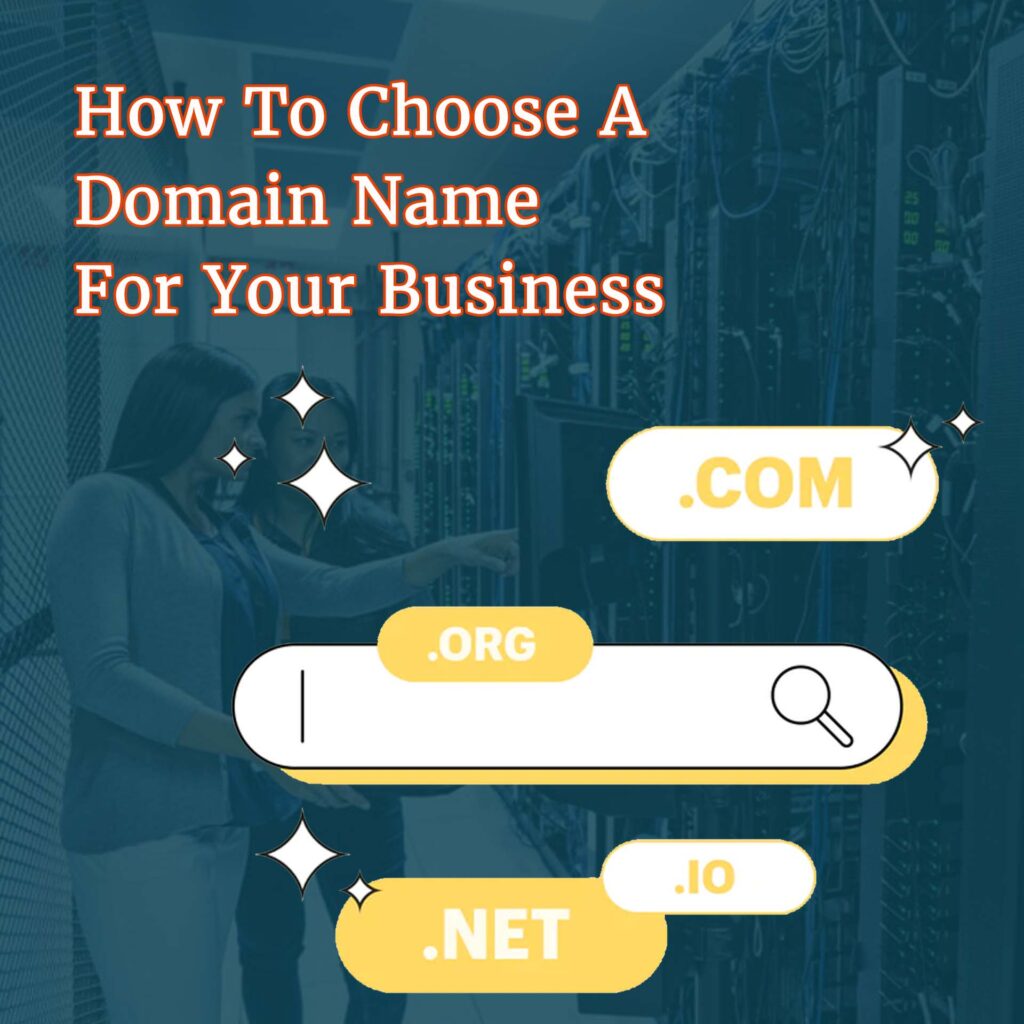Why Free Web Hosting is a Risky Choice!

Here’s why you should never use free web hosting for your professional website. “You either get free stuff or you get freedom. You cannot have both and you need to make a choice.” — Sarah Palin Let’s get real for a second. I know I’ve said in other posts and videos that you can build a website for less than $100. And yes, technically, you can set up a website for free using WordPress.com or other free hosting platforms. But should you? Absolutely not. It’s like getting a “free” puppy. Sure, it doesn’t cost anything upfront, but give it a few months, and suddenly, you’re knee-deep in vet bills, chew toys, and a couch that now has custom-designed holes. Free web hosting is the same deal—it seems like a steal at first, but it comes with a truckload of problems that will cost you big time in the long run. Why Free Web Hosting is a Business Killer If you’re running a professional business, you need full control over your website. Free hosting services strip you of that control, limiting your access to essential backend features that you’ll inevitably need down the road. Need to install a custom plugin? Too bad. Want to tweak your SEO settings? Good luck with that. Most free hosting services come with hidden catches, like forced ads plastered all over your website. Imagine running a serious business and your website is littered with ads for online casinos or “one weird trick” weight loss pills. Not exactly the professional image you want to project, right? Cheap vs. Free: There’s a Difference I don’t recommend free hosting. But I do recommend cheap hosting from a reputable company. There are plenty of reliable web hosting options that won’t break the bank. For example, Namehero, Bluehost and A2 Hosting offers hosting for under $10 per month. That’s less than the price of two fancy lattes from your favorite coffee shop, and it gives you complete control over your website. Plus, the difference between free hosting and affordable hosting is like the difference between sleeping on a park bench and renting a decent apartment. Sure, both provide shelter, but one gives you safety, security, and the ability to control your own space. The Importance of Back-End Access Your web host determines how much control you have over your website. Some hosting companies restrict access to vital settings, making it impossible to customize your site the way you need. Always choose a provider that offers full backend access. Think of it like owning a car. If you can’t pop the hood and make repairs or upgrades, you’re at the mercy of the dealership for even the smallest changes. Do you really want to pay a premium just to change your oil? Didn’t think so. How to Choose a Reliable Web Host If you’re looking for a solid, budget-friendly hosting provider, here are some top recommendations: NameHero – Trusted by web designers for over a decade, this platform offers full backend access and affordable pricing. Bluehost – Another solid choice that provides reliable hosting with no hidden catches. A2 Hosting – I used them as well they have great products but the service was not as good as the other two. These companies offer great features, strong security, and excellent customer service. More importantly, they won’t hold your site hostage or surprise you with unexpected fees. Avoid Hosting Nightmares WARNING: Not all web hosting providers are created equal! I once had a client who made the mistake of signing up for a “managed hosting” plan that included a free domain. Sounds great, right? Well, when she wanted to switch to another provider, the hosting company demanded $500 just to release her domain name. Ouch. Your domain name is your property. Always make sure you own it outright and can transfer it freely if needed. If a hosting provider locks you in with a “free domain name,” read the fine print before signing up. The Smart Way to Save Money on Hosting Hosting plans typically range from $5 to $14 per month. While many providers push for an annual payment upfront, some allow monthly billing. If you’re on a tight budget, go for a month-to-month plan to keep initial costs low. And here’s a little pro tip: It’s okay to buy your domain and hosting from the same provider, but avoid bundles that force you into managed services. Always keep control of your domain separate from your hosting to avoid unnecessary headaches down the road. Most providers will let you manage your domain apart from your web hosting. Take Control of Your Website Your website is the digital face of your business. Would you trust a free, bare-bones service with no customer support, no guarantees, and no control? Probably not. A proper web hosting plan is a small but critical investment in your business’s success. Whether you choose NameHero or Bluehost, make sure you go with a provider that puts you in the driver’s seat. Affiliate Disclaimer: I am an affiliate for NameHero, because they offer fast, reliable servers at unbeatable prices. Use my affiliate links below to get your web hosting. I guarantee you’ll be glad you did. NameHero.com Thanks for reading! If you need help strategizing your website, contact me today for a free 20-minute consultation and let’s get your online presence headed in the right direction.
Landing Pages – The Best Way To Jump Start Your Sales

“The single biggest problem in communication is the illusion that it has taken place.” —George Bernard Shaw I love this quote because it perfectly sums up why so many landing pages flop. Just because you built it doesn’t mean they’ll convert. If your landing page isn’t speaking directly to your audience, addressing their pain points, and leading them toward a clear action, it’s just another pretty page on the internet. What Exactly is a Landing Page? A landing page is a single, laser-focused web page designed to convert visitors into leads or customers. Unlike your homepage, which serves multiple purposes, a landing page has one job: Get people to take action. Whether that’s signing up for a freebie, scheduling a consultation, or making a purchase, a well-optimized landing page makes it ridiculously easy for visitors to say, “Yes, I need this!” If you’re serious about boosting sales and website conversions, landing pages should be at the top of your marketing to-do list. Why You Need More Than One Landing Page Let’s get one thing straight: One landing page is never enough. If you sell three products and one service, you need at least four separate landing pages. Each one should highlight the unique benefits of what you’re offering. Remember this golden rule: Focus on benefits, not features. People don’t care that your software has 10 customizable widgets. They care that it will save them two hours a day. Instead of listing product specs, tell them how your product makes their life easier, richer, or more enjoyable. The more landing pages you create, the better you’ll rank in search engines. More pages = more visibility. The Power of Niche Targeting A landing page is only as good as the audience it’s built for. If you try to appeal to everyone, you’ll appeal to no one. That’s why you need a specific offer for a specific audience within a small niche. Before you build a landing page, do your research. Understand what your audience struggles with, what they desire most, and how your product or service solves their problem. This is the secret to writing copy that speaks directly to them in a hypnotic way. Want help figuring out your audience? I’ve got you covered! My free Target Audience Template and Customer Profile Worksheet will help you narrow down your niche like a pro. (It’ll be available on this website soon—stay tuned!) In the meantime, download my free guide, Website Riches, and I’ll send you the link as soon as it’s ready. The Technical Side of Landing Pages Landing pages are powerful, but they come with a few caveats. Here’s what you need to know: Each landing page costs time and money to create. Too many landing pages with large images can slow down your website (a major no-no for conversions!). If you need more than five landing pages, consider using a subdomain to keep your site running smoothly. If you’re just starting out, focus on two or three of your most popular products or services and create landing pages for those first. Less is more—until you’re ready to scale. The 3 Must-Haves for a High-Converting Landing Page A compelling offer – This could be a discount, a freebie, or an exclusive deal. An opt-in form – You need to capture leads, whether it’s just a name and email or more detailed contact info. A strong call-to-action (CTA) button – This is where the magic happens. Your CTA should be clear, action-driven, and impossible to ignore. I’m a huge fan of CTA buttons. They make life simple. Want more leads? Use a CTA. Want more sales? Use a CTA. Make sure it stands out, pops on the page, and tells people exactly what to do. Landing Page Guidelines You Should Follow Ditch the navigation bar. Keep visitors focused on the action you want them to take. Include your company logo. Link it back to your homepage in case visitors want to learn more. Have a privacy policy link at the bottom. Google treats every page like a mini website, so don’t skip this step! What About SEO and Google? Google loves user-friendly pages. While traditional landing pages don’t always follow Google’s “best practices” (like having navigation links), you can still make them work for SEO. If you’re driving traffic from Facebook Ads, YouTube, or emails, you don’t need to worry much about navigation. But if you want organic search traffic, consider adding minimal links to keep Google happy. The Secret Sauce: Sales Funnels A landing page is just step one of a bigger marketing strategy. You’re not just capturing leads—you’re nurturing them into customers. That’s where a sales funnel comes in. A funnel moves people through the journey of: Discovering your offer Becoming interested Trusting you Making a purchase Coming back for more If you’re serious about growing your business, you’ll want to think beyond just landing pages and start building a conversion-focused sales funnel. Landing Pages: Your Fast Track to Sales Landing pages are one of the most effective tools for growing your online business. Thousands of entrepreneurs have used them to generate leads and sales—sometimes before they even have a full website! If you have a product or service, you can start selling right now with just a landing page. But remember, not all landing pages convert. There’s a strategy behind high-converting pages, and I’ll be covering it all in an upcoming course. So, stay tuned! If you need help crafting a killer landing page strategy, let’s chat! I’m offering a Free 20-Minute Consultation to help you get started. Click the link below to book your session now.
e-Commerce Success: The One Secret Most New Sellers Miss!

e-Commerce Success: The One Secret Most New Sellers Miss! “The secret of getting ahead is getting started.” – Mark Twain So, you want to start selling online? Great news—you’re about to tap into a massive world of opportunity. Whether you’re launching your first e-Commerce store or upgrading an existing one, this guide will walk you through the basics, from setting up shop to collecting payments like a pro. What is e-Commerce and How Does It Work? Imagine this: You wake up, pour yourself a cup of coffee, and check your phone. Ding! You just made a sale while you were sleeping. That’s e-Commerce. E-Commerce, short for electronic commerce, is simply selling goods and services online. Instead of customers handing you cash in person, they pay digitally using credit cards, debit cards, wire transfers, or even recurring ACH payments straight from their bank account. With the right setup, you can sell from your website, a physical store, or even through your phone. The best part? You don’t have to chase payments or deal with “Can I pay you later?” conversations. The money lands in your account almost instantly. How to Get Started with e-Commerce Before you start raking in sales, you need a solid foundation. Here’s your step-by-step roadmap: Choose a Platform – Your website is your digital storefront. If you’re using WordPress, WooCommerce is a no-brainer. Other popular platforms include Shopify, Wix, and BigCommerce. Pick a Domain Name – Keep it simple, memorable, and relevant to your business. Nobody wants to type in SuperMegaUltraDealsForYou.com. Design Your Store – Your website should look professional and be easy to navigate. If it feels like a maze, customers will bounce faster than a bad check. Set Up Products or Services – You need clear descriptions, high-quality images, and pricing that makes sense. Integrate Payment Processing – More on this below, but spoiler alert: Stripe and PayPal are your best friends. Setting Up Products and Services for Online Sales Here’s the deal—your products (or services) need to be ready for prime time. This means: Crystal-clear product descriptions – Tell people what they’re buying and why they need it. High-quality images – Blurry photos? Instant trust killer. Use bright, professional pictures. Logical pricing – Price too high, they walk. Too low, they question your quality. Easy navigation – If customers can’t find what they need in seconds, they’ll leave. Pro tip: Use upsells! Someone buying a candle? Offer a bundle with a matching room spray. Selling an online course? Add a workbook for a few extra bucks. Using WooCommerce to Build Your Online Store WooCommerce is like WordPress’s cooler, business-savvy cousin. It’s a free plugin that turns your WordPress site into a fully functional online store. While originally designed for selling physical products, it works beautifully for digital goods, memberships, and services too. Here’s why WooCommerce rocks: It’s free (you just pay for hosting and any premium add-ons) It’s customizable – Want to add subscriptions, bookings, or even a tip jar? There’s a plugin for that. It’s beginner-friendly – You don’t need a PhD in coding to set it up. Once WooCommerce is installed, you can: Add your products/services Set pricing and inventory levels Customize your checkout experience Connect a payment processor (keep reading!) How to Accept Payments for Your Products and Services Now for the fun part—getting paid! Online payments are fast, easy, and eliminate awkward money talks. No more waiting for checks, no more IOUs. Just cold, hard digital cash straight into your account. Best Payment Gateways for Small Business Owners If you’re just starting out, go with Stripe and PayPal—they’re reliable, easy to integrate, and trusted worldwide. If you’re selling internationally, consider Braintree (owned by PayPal) for better global coverage. Here’s what to look for in a payment gateway: Ease of use – Can you set it up without calling tech support? Security – Are your customers’ payment details safe? Transaction fees – Every provider takes a small cut, but some charge more than others. Multi-payment options – Customers want choices: one-time payments, subscriptions, even buy-now-pay-later. Setting Up Stripe and PayPal Stripe: Add a “Pay with Card” button to your site. Customize it with your branding. PayPal: Display the PayPal logo next to the Stripe button for maximum trust. Braintree (for international sales): Swap Stripe for Braintree if you need more global payment options. Boom! You’re now ready to accept payments like a pro. Online Payment Security: Protect Your Customers and Your Business People are trusting you with their money, so security is non-negotiable. Use SSL certificates to encrypt transactions. Choose a reputable payment gateway (Stripe, PayPal, etc.). Stay PCI compliant (payment processors help with this!). Enable two-factor authentication for added security. Maximizing Sales with Smart Checkout Strategies Your checkout page is where the magic happens—but also where customers can abandon their cart. Here’s how to keep them on track: Offer multiple payment methods – Credit cards, PayPal, Apple Pay, Google Pay. Simplify the checkout process – The fewer clicks, the better. Use trust signals – Show secure payment badges. Include upsells – “Want to add this for just $10 more?” Yes, please! Send cart abandonment emails – A gentle nudge can recover lost sales. Final Thoughts Setting up an online store might seem overwhelming at first, but once you’ve got your platform, products, and payment system in place, it’s smooth sailing. Just remember: Choose a reliable e-Commerce platform (WooCommerce is great for WordPress users). Make sure your product listings are clear and compelling. Use Stripe and PayPal for seamless payments. Keep security a top priority. Optimize your checkout process to boost conversions. Now go forth and sell like a boss. If you need a little extra help getting started, don’t hesitate to reach out for a Free Coaching Session—I’d love to help you turn your e-Commerce dreams into reality.
3 Essential Tips to Build Your Own Website – Easy & Affordable Guide

“Growth is painful. Change is painful. But nothing is as painful as staying stuck where you do not belong.” –N. R. Narayana Murthy Building your own website—it’s not as hard as you think. Seriously, if you can type an email, you can build a website. And if you’ve ever spent an entire afternoon trying to untangle your headphones, trust me, you already have the patience needed to get this done. Now, let’s be real. You might think your website is the single most important part of your business. Nope. That’s a myth. I’ve bought plenty of products and services from businesses that didn’t even have a full website—just a simple landing page. But your website is where you keep your customers engaged. This is where you introduce new products, offer deals, share updates, and showcase what makes your business awesome. Who Is This Guide For? If you’re just getting started, running a business making under $60K in online revenue, or if dropping $2K-$5K on a web designer makes your wallet break out in hives, this is for you. You can build your own website without selling a kidney. You just need the right tools and a little bit of guidance (which is exactly why you’re here). So, let’s get to the fun part—how to build your own website without needing a degree in computer science. Step 1: Choose Your WordPress Theme (Without Losing Your Mind) Keyword: WordPress themes The theme you choose determines how your website looks and feels. Think of it as the interior design of your online home. You wouldn’t decorate your house with mismatched furniture and neon green walls (or maybe you would—no judgment). Your website needs to look clean, professional, and you. Where to find WordPress themes: Visit the WordPress.org repository. There are thousands of free themes. You can find premium themes ($30-$97) on sites like ThemeForest or Elegant Themes. Pick one that’s been updated in the last six months (trust me, outdated themes = future headaches). Installing a WordPress theme is as easy as installing an app on your phone. It’s a one-click install, and boom—you’re halfway to an amazing website. Quick Tip: Some free themes have limited functionality, but you can still make them work. If you want more customization, invest in a paid theme. Step 2: Install Must-Have WordPress Plugins If themes are the design of your website, plugins are the power tools. They help you do everything from collecting emails to securing your site from hackers. You don’t need a million plugins—just a few essential ones to get started. Here’s what you must install: SEO Plugin: Rank Math or Yoast SEO (to help your site rank on Google) Backup Plugin: ManageWP (so you don’t lose your hard work) Security Plugin: Wordfence or iThemes Security (because hackers are real) Email Marketing Plugin: Mailchimp or AWeber (to start building your email list) E-commerce Plugin (if selling products): WooCommerce (because Shopify costs $$$) Installing and setting up plugins is usually just a matter of clicking “Install” and “Activate.” Most have helpful documentation or video tutorials (because nobody likes reading complicated manuals). Pro Tip: Free versions of plugins work great, but if you need more features, premium versions are available. Just don’t go overboard—too many plugins can slow down your site! Step 3: Back Up Your Website (So You Don’t Cry Later) Listen, I learned this the hard way. After building a gorgeous site, I made one tiny change and poof—my entire database crashed. I had to start over. (Yes, I cried. No, I’m not ashamed.) Here’s how to avoid this tragedy: Use ManageWP (free) for automatic backups. Always back up your site before making major changes. Test your site before backing it up—you don’t want to save a broken version. It’s like saving your work before your computer crashes—except your website is way more important. Bonus Tips for a High-Converting Website Because I like you, here are some extra goodies to make sure your website isn’t just functional—but actually works for your business. Optimize for SEO (Or Stay Invisible) SEO (Search Engine Optimization) is how you get found on Google. If your site isn’t optimized, it’s like throwing a party but forgetting to send invites. Nobody’s showing up. Use Rank Math or Yoast SEO (both have free versions). Focus on keywords—sprinkle them naturally throughout your site. Write blog posts (like this one) that answer common questions your audience has. Make sure your website loads fast (Google hates slow sites). Use a Website Builder for Blog Templates A website builder like Elementor or Divi makes it easy to create blog templates. That way, you’re not starting from scratch every time you post new content. Consistency = professionalism. Set Up Email Marketing (Because Social Media Isn’t Reliable) Social media algorithms change all the time, but an email list is yours forever. Services like Mailchimp or AWeber let you collect emails and send newsletters—for free (up to 500 subscribers). Install their plugin on your site. Add a signup form to your homepage. Offer something valuable in exchange for their email (a free PDF, discount, etc.). Learn As You Go (Without Going Broke) Building your own website means you’ll run into questions. The good news? There are tons of free resources to help you out. YouTube: Darrell Wilson’s tutorials are gold. Lynda & Udemy: Online courses for deeper learning. Google: Your best friend when troubleshooting. And if all else fails—shoot me an email or leave a comment on my site. I’ll help you out. 😉 Final Thoughts Building your website can be fun, easy, and affordable if you follow these steps. And the best part? Once you do it yourself, you’ll never be at the mercy of a web designer again. So, are you ready? Start planning your pages, install WordPress, and take action. And if you need more guidance, check out my High-Converting Website Program—it’ll save you hours of trial and error. Now go forth and build something awesome. 🚀
5 Types of Emails Every Business Needs | Email Marketing Strategy

Email marketing is like the secret sauce of a thriving business. Get it right, and you’ll have customers coming back for more. Get it wrong, and… well, let’s just say crickets don’t buy anything. For the past three years, I’ve been using MailerLite, and I’ve told my clients to use it too. Why? Because it’s simple, effective, and doesn’t make you feel like you need a Ph.D. in tech to set up an email campaign. I even became an affiliate because I believed in it that much. Before MailerLite, I hopped around email marketing platforms like a kid in a candy store. I used Mailchimp for years after ditching Constant Contact. Then, I had a brief fling with GetResponse… but for some reason (which I can’t even remember), I dropped it after a month. What I do remember is that getting email marketing right from the start is crucial. Do it right, and you’ll save yourself a ton of headaches when your list starts growing and your website traffic skyrockets. Why Email Marketing Platforms Matter Many email marketing experts swear by the same tools I use. Not because they paid me to say so, but because they work. I was fine with Mailchimp until a millionaire blogger (who I admired) told me what he used. And well… I wanted to be like him. You get it, right? I did a product launch using MailerLite and fell in love with its features. It made migrating all my clients over an easy decision. The right email platform is the foundation of your business. Choose wisely, and future-you will thank you. And speaking of Mailchimp—big shoutout. They’ve been around forever, and since Intuit acquired them, they’ve added some impressive features (especially in their paid plans). But back when I was using it, they removed some features I needed, and I wasn’t about to upgrade just to get them back. Plus, they wouldn’t let me market to a list of uploaded emails. That was the final straw. So here’s the deal—if you’re serious about email marketing, you need a solid platform. My recommendations? MailerLite, AWeber, or Mailchimp. Sign Up for MailerLite and Get A 30-Day Free Trial. The 5 Must-Have Emails for Every Business Now, let’s talk about the emails that every business needs. These aren’t just any emails. These are the backbone of your email marketing strategy—the kind that keep your audience engaged and coming back for more. 1. Welcome Emails (AKA Nurture Emails) First impressions matter. A welcome email is your chance to say, “Hey there, glad you’re here!” and introduce your brand. It sets the tone for your future relationship. Plus, it’s a great way to provide value upfront—maybe a freebie, a discount, or just a warm, friendly introduction. 2. Promotional Emails Ah, the money-makers. These are the emails where you promote your products, services, or limited-time deals. You can send standard promotions, sale-day promos, or even affiliate marketing emails. The key? Make it about them, not you. What’s in it for them? Why should they care? Sell without being salesy. 3. Thank You Emails Gratitude goes a long way. Whether someone just bought a product, signed up for your list, or attended your webinar, send a quick thank-you email. It builds trust and makes people feel valued. And let’s be real—who doesn’t like a little appreciation? 4. Announcement Emails Got a new product? Launched a new video? Opening up a coaching program? Shout it from the rooftops—or better yet, send an announcement email. Keep it exciting and make sure there’s a clear call to action. 5. Abandoned Cart Emails People abandon carts all the time. Maybe they got distracted, maybe they weren’t ready to commit, or maybe their cat walked across their keyboard. Whatever the reason, an abandoned cart email is your chance to nudge them back. A little reminder (or even a small discount) can work wonders. The Importance of List Building Building an email list isn’t an overnight success story—it’s a process. It takes time, effort, and consistency. But when done right, it becomes one of the most powerful assets in your business. A well-nurtured list means you have direct access to your audience—no algorithms, no guesswork. If you’re feeling overwhelmed or need help setting up your email marketing system, I’ve got your back. Let’s get this part right the first time. Schedule a Free Coaching Call – for Immediate Help. Email marketing is an investment that pays off big time. Start with the right tools, send the right emails, and watch your business grow. Thanks for reading!
How To Choose A Domain Name

What’s in a name? That which we call a rose by any other name would smell as sweet. — William Shakespeare Domain names are important, but they can also be super confusing. Especially when you’re just starting out and don’t know where to begin. That’s why we wrote this article! To help you understand everything there is to know about domain names and how to choose the perfect one for your business. We’ll even give you a few tips on what to do if the domain name of your dreams is already taken. Does my domain name really matter? People don’t care what you say your name is. They only care about what you will do for them. That’s the only thing that matters. They will remember your name only after hanging out with you a few times. Don’t get hung up on your domain name. It is not the name of your business and you are free to choose any name that is available. Your domain name is the first thing. A domain name is just the name you will use to register your website. It’s the www.address. com that you place in your web browser some people can find your website. Think about what your business does and what your primary purpose is. Then jot down about 5 different domain names for your business and put them in the order of your preference. The reason for this is in case the name at the top of your list is taken you can get one of the others. I say make a list because once you find an available domain name you must purchase it immediately or you may lose the chance of doing so. Scammers are flipping domain names like they are houses and when they see enough people checking on a particular domain, they will purchase it and put the name for sale at ridiculous prices. So don’t start searching until you have a list and are ready to make a purchase. Domain names go for anywhere between $14. – $25. Depending on what top level domain extension you are using, i.e.; example.net, example.com, example.org. If you do not need a specialty extension like .info, .tv, .nyc, .plumper. Then you should be able to find it for under $30.00. I say under $30. because you need to add privacy to your domain purchase. Domain privacy is usually around $9.99 a year. In this way you will avoid the flood of telemarketers trying to sell you a website design, SEO or some other services. There is a lot of boring stuff I can teach you about domain names and networking, however the only thing you need to know about domain names is number one is you need to get one and two you need to add the privacy to it. This course is also a great learning tool if you only need enough information to make smart choices that will save you money when using a web designer or digital agency. In that case continue reading. I will cover buying your domain and web hosting together. That is because most companies include a free domain for 1 year when you purchase there hosting package. Stick with a popular service like Blue Host or GoDaddy, although I don’t care for GoDaddy I always use Web Sales Academy or Name-Hero They are inexpensive and they give great value with many free add-on like Cloud-Flare, backups and a whole lot more. Besides that they always seem to running some sort of promotion. So take my suggestion and use Web Sales Academy and purchase their Starter Plan. At the time of this writing you can purchase it for $110. For 1 year of 2 years at around $191.00. When you use my affiliate link, I will provide you with some additional free options. Such as setting up your Business Facebook page or free instruction to optimize your YouTube channel for SEO. This offer will change over time, but it will always be something you need to get you started quicker. Skip all the extras and upgrades that they your web hosting company offers, you don’t need them. Lastly when you purchase your domain name make sure to include domain privacy. You will thank me for this later. You don’t want to get the flood of telemarking calls trying to sell you services you don’t need. Also keep in mind the are some ready made pre-built platforms with all the elements you will need already included. Platforms like Wix, Click Funnels, Kartra, and Groove Pages just to name a few. Let’s take some time to discuss these ready-made platforms here. First of all never use Wix. I repeat Never ever use Wix. Most Wix sites are flat websites. Which means a lot of the content management you will need you have to pay a lot more to use. All the integrations, such as content marketing may not be easily available. Click Funnels, Kartra, Shopify and Groove Pages are ready made platforms that work very well. However they can become quite costly. If I had to pick one. I would go with Groove Pages. It’s free to get started with 3 websites. However if you want all the added features it costs around $99. per month. When you do a deep dive into everthing you will get. You will soon realize why Groove Pages is the cheapest and best solution over time. So do yourself a favor and check out Groove Pages, because it is the best platform with everything you will need already built in. To scale your business to whatever size you want. I will doing a tutorial series on Groove Pages my YouTube channel because I believe this is the best platform for 2021 and beyond. Here is a my affliate link to Get Started With Groove Pages: So,
The Ultimate Guide To Start An Online Business:

Building an online business requires several steps, but we’ll just focus on the four most important items to get you started off on the right foot. After this, I’ll touch on some of the essential skills required for success. Pick the product or service you want to sell The primary thing you need to do is figure out what product or service you want to sell, and who your target market is. Once you know these things, it’ll be much easier to create an effective customer profile or avatar. Keep in mind that this will be the person (or people) whom you’re selling your products or services too. Before you can build an online empire, you need to set some foundations. This includes constructing a website, picking a domain name, and using social media platforms. What you might not know is that focusing on the bottom line is the last thing you should do. Figure out what product or service you want to sell and who your target audience is. Then, try selling it at least once or twice before investing time and money into creating a website–it doesn’t make sense to bring a product to market if nobody wants it. It would be like trying to sell a transistor radio in today’s world. Zero in on your target audience Your product or service won’t sell itself, so you need to make sure it is marketable before anything else. Figure out what your target audience is and build a website that sells to them. You can get to know your target audience by creating a customer avatar or customer profile. Though it takes time to learn how to do all the research by listening to conversations online, this is one of the most important skills you need for your business. The better you understand your customers, the easier it will be for social media targeting, advertisements, and selling them more stuff/referrals–which we call ascension up the value ladder. It’s important to always remember that your customer profile is ever-growing and something you should update regularly. The more you know about your customers, the higher your income will be because you can better target ads specifically to them. This also means that ad spend will be lower while conversion rates remain high. Get a domain name and website set up Now that you know what your selling and you know who your selling to. The next step is to start building out your website. Or a least a landing page. More about Landing Pages later. If you need help choosing a domain name for your business, watch my other video or read my blog post on the subject. Your next step is to get a domain name and webhosting. Name Hero is, hands-down, the best web hosting platform I’ve ever come across. Their state of the art servers provide incredibly fast page load times, and they offer a suite of security tools to keep your website compliant with Google standards and SEO best practices—all at no additional charge. In case your wondering. Yes, I am an affiliate That’s because I use them. I’ve used other web hosting companies with my customers in the past and Name Hero just happens to be the best. So, if you need a domain name or want a better hosting solution, click on the link below. Switch to Name Hero for freaky fast web hosting… Now that you have identified your target audience and know what product or service to sell, get your domain name and set up your website. Next, you will want to create social media accounts to help promote your business. Add social media accounts After you purchase your domain and web hosting, set up a business email account with your new domain. This way, all of your correspondence will be branded with your website name. We’ll return to that soon. The social media platforms you post on will be determined by your target audience. For example, if you sell business products, then LinkedIn should be one of your primary platform choices. However, if you’re targeting a younger market then Tik Tok might be better. All in all though, I would definitely set up accounts for Facebook, YouTube,LinkedIn and Tik Tok since these are the best platforms for buying ads currently available.” As for branded accounts, I would go with my business name on both Facebook and YouTube. If you’re unsure of whether to create a personal or business profile on LinkedIn and TikTok, consider what you’re trying to brand. If it’s yourself as an individual, then use your name. However, if you want to promote your business, use the company name as the profile name. Get those accounts set up and inactive for now – we’ll come back to them later. It’s crucial to understand what you are primarily promoting. Are you branding yourself as the expert who has stuff to sell, or are you promoting a company that sells stuff. Branding yourself as the expert has a lot more flexibility. It allows you to promote whatever products or services you want and your audience will follow. If you want my suggestion, get personal accounts for LinkedIn and TikTok so you can promote yourself no matter where you go. The next thing I would do is go back to my web hosting platform and log into the back end which is control panel. Then I would start setting up my email accounts. Here are 5 email addresses your business needs. contact@yourdomain.com (For outside organizations like the press or the IRS) info@yourdomain.com (For people looking for more information) support@yourdomain.com (For when they need your help with what you sold) yourname@yourdomain.com (For your personal business and social media accounts webadmin@yourdomain.com (For any website issues.) Start Building A Website The next thing I would do is build out




